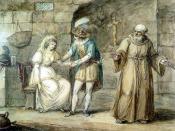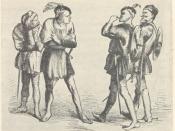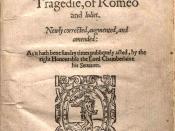AS 91480: Respond critically to significant aspects of visual text(s) through close reading, supported by evidence
AS 91480: Respond critically to significant aspects of visual text(s) through close reading, supported by evidence
The renowned auteur Baz Luhrmann has produced films that have caused controversy with critics and audiences alike; controversy that is largely due to the films' eccentricity and psychedelic manner. His directorial style is often associated with unconventional uses of music and sound, chaotic montages, camerawork and costumes. Moulin Rouge! (2001) and Romeo + Juliet (1996) are two films within Luhrmann's Red Curtain Trilogy, which showcase these defining characteristics. Through these films, Luhrmann exhibits exceptional understanding of his intended audience and has taken artistic risks to create visually captivating cinematography. Furthermore, Luhrmann is not only successful in constructing striking alternate worlds, he is also able to stimulate audiences' comprehension of human nature and the reason for human actions as a result of love, hate and jealousy.
The excerpt from Romeo + Juliet being analyzed is the opening sequence of the film, depicted by a montage and followed by a fight at the gasoline station. This excerpt is crucial in establishing the setting of the play and introduces the characters. We are shown that the society of Verona Beach is ravaged by the feud of the two households: Montague and Capulet.
Unlike his predecessors, Luhrmann was able to transform Shakespeare's tragic Romeo + Juliet to one that appeals to a modern day audience. He has done this by setting the story in a world resembling ours, with few deviations - namely the use of Shakespearean language and the corruption of the town due to the family feud. Luhrmann's cinematography shows his recognition that modern viewers are more likely to be attracted and respond positively to a classic that exhibits...


